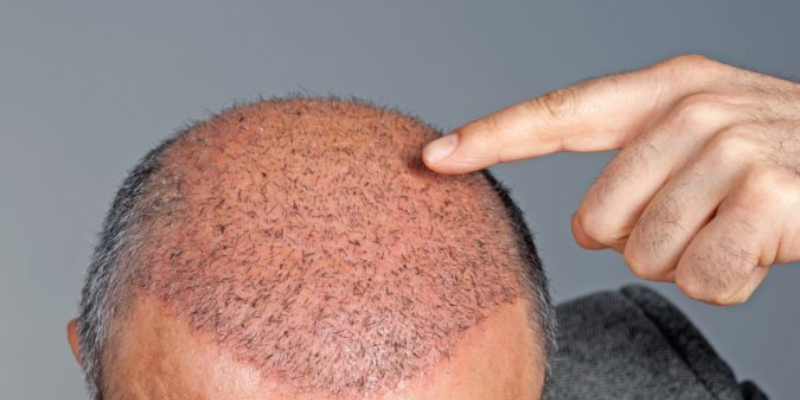The right timing is very important for a successful hair transplant. The question of when hair transplantation is done is closely related to the level of hair loss. Hair transplantation is not appropriate for those whose hair loss has not reached a particular stage, and it is also not appropriate for persons with severe hair loss. There are several reasons for this, but the most important one is aesthetics.
When to Get A Hair Transplant?
People with continuing hair loss will have an unattractive and odd appearance after transplantation since the transplanted hair does not fall out. This will result in new and mixed patches of baldness in those who have not yet attained a specific degree of hair transplantation.
At least 60 percent of the baldness loss and the severe shedding phase ends before the ideal time for hair transplantation arrives. Consequently, your doctor will examine your hair loss trend, and a hair transplant plan will be developed in the most precise manner.
It is now feasible to transplant hair even if a person does not have any hair at all by using hairs obtained from other body areas (beard, arm, leg, chest). In order to undergo hair transplantation, a person must be in excellent health and have hair follicles that can harvest from their scalp. When it comes to hair transplantation, a variety of events can be beneficial, but there is no difficulty in terms of time.
A person’s psychological and economical circumstances must be in place before undergoing hair transplantation. Even while it isn’t necessary to get a hair transplant in any particular season, it is vital to keep in mind that hair loss might increase in certain months and decrease in others, depending on the seasons. Depending on the person’s hair structure, they might begin the transplantation procedure by analyzing the current condition. To prevent exposure to the sun, some experts recommend planting in the fall, especially in the forehead and hill area.
When Does The Transplanted Hair Start To Grow? : When To Get A Hair Transplant
As quickly as possible, someone who has had a hair transplant wants to reclaim his new look. Upon completion of the healing procedure, the transplanted hair begins to grow . After 2-3 months but it takes about a year to achieve the ideal natural condition of the hair transplant. People’s hair form and environmental factors might affect how long this procedure takes.
Small sores in the newly transplanted region heal via scabbing in the first two weeks following hair transplantation. During this time, the transplanted grafts adhere to their new locations and adapt. It takes about a month for the hair to grow back to its usual length once the shock loss has occurred.
During the first healing phase after hair transplantation, temporary hair loss is essential for the hair strands to recover their natural growth shape. Approximately a month after the hair transplant surgery, this procedure begins. Individuals may have a different start and finish period for their temporary shedding process. Temporary shedding ceases and hair follicles begin to develop after the second month. A particular form begins to take shape in the fourth month as the hair strands develop. The hair follicles develop between 45 and 80 percent by the sixth month.
The Best Season for Hair Transplantation
Hair transplantation may be performed at any time of the year, regardless of the season. Hair loss might increase or decrease in frequency just during certain months and seasonal changes, depending on the individual. Each individual can identify the best time for hair transplantation based on their unique hair structure by monitoring this procedure.
Sowing time is dependent on several factors. Swimming and sun exposure should be avoided for as least 10 days following a hair transplant. Protect yourself from the cold by wearing cotton and loose-fitting caps after hair transplant surgery in the winter.
Light crusting and redness on the skin after a hair transplant should not subject to heavy sun rays while they are mending. Within three months, the transplanted hair starts to grow.
How To Perform Hair Transplant?
In accordance with the recommended approach, hair follicles in good condition take one at a time from the person’s non-shedding regions after the area to transplant has properly prepped for the process. Thereafter, they are separated. This time it does one by one, once all the roots separate from each other. To begin the sowing procedure, channels must open with extreme care.
When opening the canal, the lateral slit approach, which has become more popular than the punch system. It also allows for incisions that tailor to the hair’s structure, allowing for the creation of channels that are tailored to the patient’s hair follicle’s size and length. Hair transplantation can also be used on scarred regions. If you’ve lost your beard or eyebrows, hair transplantation may be a good option for you as well.
Things To Consider After Hair Transplant?
When it comes to hair transplants, there are numerous elements that influence the treatment’s effectiveness. Hence, it’s feasible to get the best results by examining each component in its own way. The best way to evaluate each of the answers give to the question “What should consider following hair transplantation?” in terms of subject integrity and operation would be to make a quick review at this point.
Things to consider after hair transplantation can sum up in the following manner:
Bandage Removal and First Washing
There are a number of things that need to take into consideration in the post-operative procedure. It includes the first and possibly most essential wash that should perform following bandage removal. Under the guidance of the physician performing the procedure, it is strongly suggested that the bandage be removed two or three days following the operation.
When it comes to hair transplants, the doctor’s suggestion to involve in the process is applicable not just for removing the bandages. It is also throughout the entire procedure. In most cases, the bandage is not reapplied after it properly removes. Since the bandage promotes perspiration in the hair follicles, which slows down the recovery process. The first step following hair transplantation is to remove the bandage and wash the hair. Shampoo selection and washing technique are two important aspects of cleaning after hair transplantation.
When to Get a Hair Transplant Surgery?
A hair transplant surgery may be a good option for those who have experienced significant or complete hair loss due to conditions like male pattern baldness or alopecia. Those who want to increase their confidence and improve their overall appearance can also benefit from hair transplantation. The hair transplant procedure is safe and effective, and its results can be natural-looking and permanent. Additionally, the costs of the procedure are no longer prohibitive as many insurance plans cover it today. If you think you may be a good candidate for a hair transplant, it is important that you discuss your options with your doctor or dermatologist so that they can help you determine if this procedure is right for you.

It is also important to make sure that the hair transplant specialist conducting the hair transplant surgery has experience in this field in order to ensure the best results. With experienced surgeons trained in proper techniques and modern technology available, most patients report being very satisfied with their results post-surgery. It is also helpful to seek advice from friends or family members who have already had a hair transplant and talk with them about their experience with the procedure.



